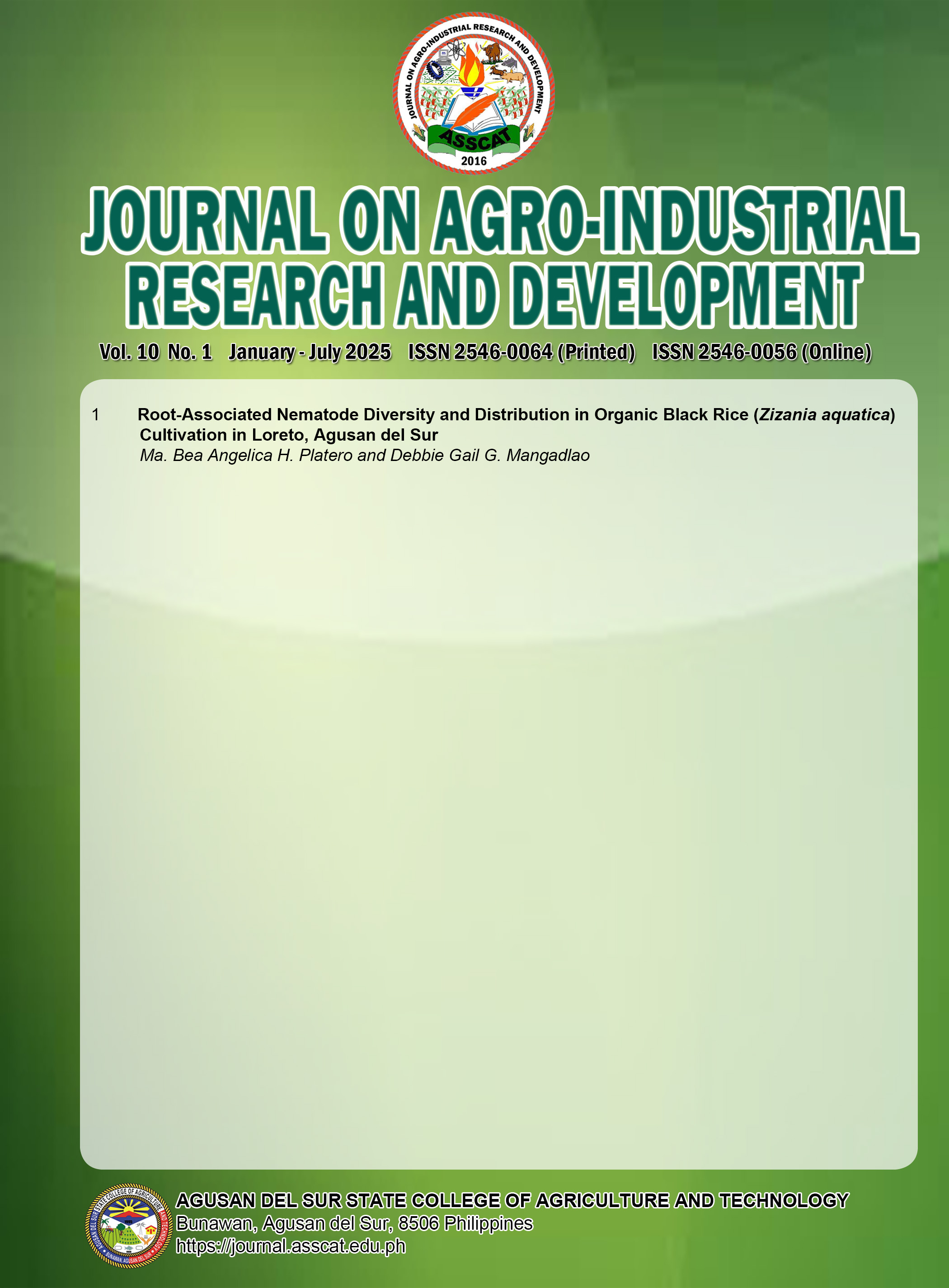Root-Associated Nematode Diversity and Distribution in Organic Black Rice (Zizania aquatica) Cultivation in Loreto, Agusan del Sur
Keywords:
Nematode diversity, Nematode distribution, Black rice (Zizania aquatica)Abstract
Nematodes play a significant role in soil ecosystems, contributing to nutrient cycling and organic matter decomposition; however, while their presence and characterization has been widely studied in common rice varieties, research on nematodes in organic black rice (Zizania aquatica) remains limited. This study assessed the diversity and distribution of root nematodes in organic black rice fields in Loreto, Agusan del Sur. Nematodes were extracted using the Baermann funnel technique from three sampling plots (A, B, and C) and identified using an Omax trinocular microscope. The isolated nematodes were identified at the genus level, and their presence was correlated to selected soil physicochemical characteristics, including pH, temperature, and moisture. Plot A had the highest diversity and abundance (36 individuals, six genera: Coslenchus sp., Filenchus sp., Hoplolaimus sp., Longidorus sp., Psilenchus sp., and Tripylina sp.), followed by Plot C (25 individuals, three genera: Rhabditis sp., Coslenchus sp., Filenchus sp.) and Plot B (23 individuals, three genera: Aphelenchus sp., Coslenchus sp., Filenchus sp.). Coslenchus sp. and Filenchus sp. were most abundant across all plots. All plots had slightly acidic pH (6.8) and warm temperatures (26.8°C–28.6°C), with Plot C having the highest moisture content (85.5%). Spearman’s correlation showed significant associations between clay soil type, moisture, and Psilenchus sp (p<0.05). This study provides baseline data for sustainable nematode management by linking nematode diversity to soil conditions, offering insights for maintaining balanced communities through good soil health practices. Future research should investigate the functional roles of dominant genera and implement long-term monitoring of nematode populations and diversity to gain a deeper understanding of soil nematode-plant dynamics in organic black rice systems in the Philippines.





